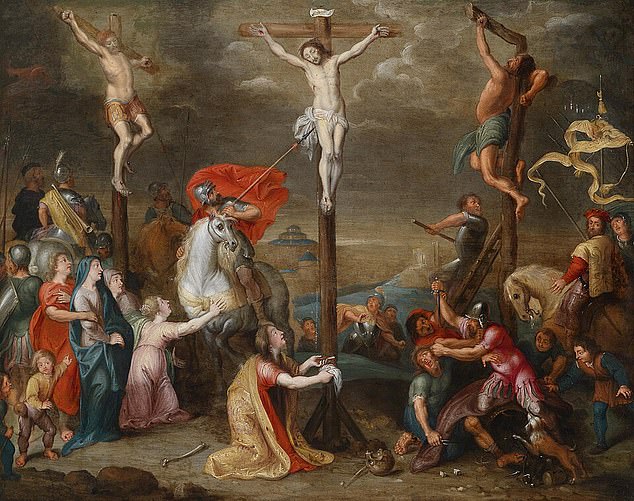
Ancient Banned Gospel Unveils Jesus’s True Executioner in Lost Scripture Revelation
The Soldier Who Pierced Jesus: The Legend of Longinus
An ancient manuscript, The Gospel of Nicodemus (also called the Acts of Pilate), claims to name the Roman soldier who delivered the final blow to Jesus on the cross. Although excluded from the Bible, this 4th-century text identifies the soldier as Longinus, who pierced Jesus’ side, causing blood and water to flow—a detail echoed in John 19:34.
[Image suggestion: Illustration of the crucifixion scene with a Roman soldier holding a spear. Caption: Artistic depiction of Longinus piercing Jesus’ side, as described in John 19:34.]
Despite no mention in canonical scripture, Christian tradition portrays Longinus as a figure of redemption. Legends say he witnessed supernatural events during the crucifixion, including an earthquake and darkness, leading him to declare, “Truly this was the Son of God” (Matthew 27:54). Some accounts claim he was miraculously healed of blindness when Jesus’ blood touched his eyes.
After the Resurrection, Longinus supposedly guarded Jesus’ tomb but refused bribes to lie about the body being stolen. He later preached Christianity in Turkey, enduring torture—his teeth pulled and tongue cut out—before being beheaded. Though unverified historically, his story symbolizes conversion and martyrdom.
[Image suggestion: Statue of Longinus in St. Peter’s Basilica. Caption: A striking sculpture of Longinus beneath St. Peter’s dome, Vatican City.]
The Gospel of Nicodemus: A Controversial Text
Scholars debate the text’s origins. Some attribute it to Nicodemus, the Pharisee who aided Jesus’ burial (John 19:39). Others argue it was penned anonymously centuries later. Its exclusion from the Bible stemmed from questions about authorship, timeline discrepancies, and theological conflicts. Yet, it offers vivid details of Jesus’ trial and crucifixion, including Longinus’ role.
The Book of Jubilees: Giants and the Great Flood
Another omitted text, the Book of Jubilees, offers an alternate Flood narrative. While Genesis cites human wickedness, Jubilees blames “the Watchers”—fallen angels who fathered giant offspring with humans. These giants supposedly ravaged Earth through violence and cannibalism, prompting God to send the Flood.
[Image suggestion: Ancient scroll fragments. Caption: Dead Sea Scrolls片段, including parts of the Book of Jubilees.]
Discovered in the Dead Sea Scrolls, Jubilees elaborates on Genesis but was rejected for its fantastical elements and lack of apostolic ties. It underscores how ancient texts often expand—or contradict—biblical stories.
Why These Texts Matter
Accounts like Longinus’ and Jubilees highlight early Christianity’s diverse traditions. While not scripture, they shaped folklore and art, reflecting humanity’s quest to fill historical and spiritual gaps. Longinus’ statue in St. Peter’s Basilica and Jubilees’ mysterious giants remind us that faith and legend often intertwine.
[Image suggestion: Mosaic of Nicodemus. Caption: Nicodemus, a key figure in Jesus’ burial, is linked to the disputed Gospel.]
Though unproven, these stories endure, offering glimpses into how ancient communities grappled with faith, history, and the divine.


